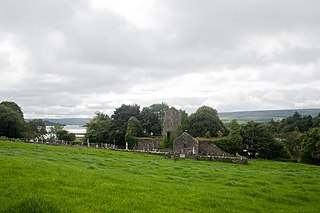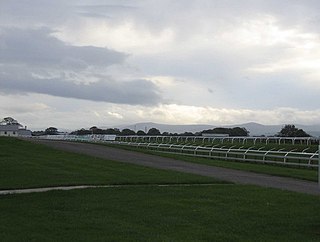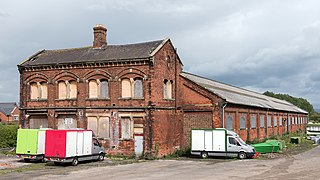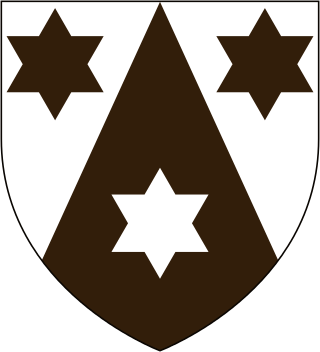Related Research Articles

The Diocese of Carlisle was created in 11 April 1132 by Henry I out of part of the Diocese of Durham, although many people of Cumbric descent in the area looked to Glasgow for spiritual leadership. The first bishop was Æthelwold, who was the king's confessor and became prior of the Augustinian priory at Nostell in Yorkshire. Carlisle was thus the only cathedral in England to be run by Augustinians instead of Benedictines. This only lasted until the reign of Henry III however, when the Augustinians in Carlisle joined the rebels who temporarily handed the city over to Scotland and elected their own bishop. When the revolt was ended, the Augustinians were expelled.

Carlisle Cathedral is a Grade I listed Anglican cathedral in the city of Carlisle, Cumbria, England. It was founded as an Augustinian priory and became a cathedral in 1133. It is also the seat of the Bishop of Carlisle.

Ballindoon Friary was a Dominican priory beside Lough Arrow in County Sligo, Ireland. It was dedicated to St. Mary and founded in 1507 by Thomas O'Farrell. It was dissolved c. 1585 and is now in ruins.

Port Carlisle Junction was a railway junction between the lines of the former Caledonian Railway and North British Railway companies lines to the north of Carlisle Citadel station in, what is now, Cumbria, England. It opened in July 1863. Port Carlisle Junction railway station was a very short lived station that first came into use in July 1863 and there was some untimetabled use until 29 October 1863, but the station closed as early as 1 July 1864. After closure, the up (northbound) platform was retained for use by those crews requiring change and also for passing messages on to crews.

Carlisle Racecourse is a thoroughbred horse racing venue located in the village of Blackwell just outside Carlisle in Cumbria, England. The course has been on its present site since 1904, when it moved there from the area known as The Swifts close to the centre of Carlisle. The course is 1 mile and 4 furlongs (2.41 km) in circumference, right-handed, and hosts flat racing in the summer and National Hunt racing over the winter months. The last half mile is up a steep incline. The going can get very heavy in the winter.
Events from the year 1536 in Ireland.
Events from the year 1542 in Ireland.
The Church of the Friars Preachers of the Annunciation of the Blessed Virgin Mary at Wigtown, commonly called Blackfriars, was a mendicant friary of the Dominican Order founded in the 13th century at Wigtown, Galloway, Scotland. The Chronica Extracta said that it was founded by Dervorguilla of Galloway, who died in 1290.

Carlisle London Road railway station was the first to open in Carlisle, Cumbria, England. It was built as a terminus of the Newcastle and Carlisle Railway and opened in 1836, when trains could only run as far as Greenhead; not until 1838 was it possible to travel by rail all the way to Gateshead.
There were two Scotby railway stations situated in the village of Scotby, two miles outside of Carlisle, England. Both have closed.

Brampton Town railway station was the terminus of the Brampton Town Branch, in the centre of Brampton, Cumbria, England. It was opened in 1775, to work on the Earl of Carlisle's Waggonway. By 1836, a horse-driven passenger service had been implemented when the track was realigned to meet up with the Newcastle and Carlisle Railway, providing a service to Milton station, now Brampton (Cumbria) station, about a mile out of town.
Appleby Friary was a friary at Appleby-in-Westmorland, in Cumbria, England. It was a Carmelite friary founded c. 1290 and dissolved in 1539.
Carlisle Dominican Friary was a friary in Cumbria, England. The Dominican order settled in Carlisle in 1233. The convent of the Black Friars, as this was known, was located between what was later the St. Cuthberts's church and the English gate. Later archeological findings show that the convent was built over an earlier Roman settlement.

Greyfriars, Gloucester, England, was a medieval monastic house founded about 1231.

Whitefriars, also known as the White Friars or The College of Carmelites, Gloucester, England, was a Carmelite friary of which nothing now survives.
Lancaster Friary was a friary in Lancashire, England. The buildings were approximately where Dalton Square is found today. It was active between 1260 and 1539. Nothing remains. Two archaeological trenches were dug in 1981 and 1994; they exposed some tiles and wall footings.
References
- ↑ "Our History". carlislecathedral.org.uk. Carlisle Cathedral. Retrieved 29 January 2024.